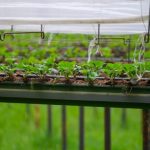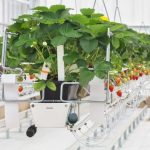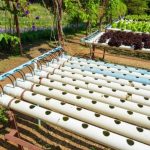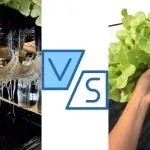Hydroponics, a soilless method of growing plants, has gained significant popularity in the realm of urban and indoor gardening. In this article, we will delve into the fascinating world of hydroponics and specifically focus on comparing two prominent hydroponic systems: NFT (Nutrient Film Technique) and DWC (Deep Water Culture). By understanding the unique features and benefits of each method, you can make an informed decision about which approach suits your gardening needs.
Hydroponics revolutionizes the way plants are nurtured, providing optimal growing conditions by delivering nutrients directly to the plant’s root system. This soilless approach eliminates the challenges associated with soil-based cultivation, such as weed growth, soil-borne diseases, and nutrient imbalances. With hydroponics, you have precise control over the growing environment, enabling faster growth, higher yields, and year-round cultivation.
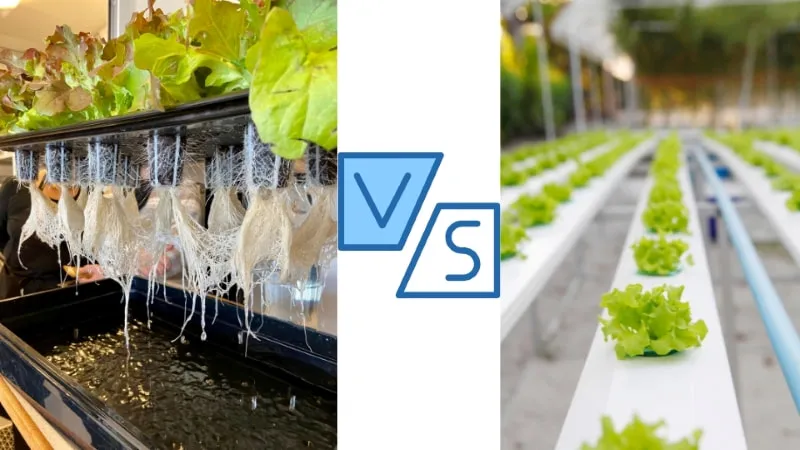
In this article, we will explore the intricacies of NFT vs DWC hydroponics, shedding light on their functioning, advantages, and considerations. Whether you’re a seasoned hydroponic enthusiast or a beginner looking to venture into this exciting realm, this comprehensive comparison will help you make an informed decision about which system aligns best with your gardening goals.
Now, let’s dive into the specifics of NFT and DWC hydroponics to unravel their unique characteristics and benefits.
NFT Hydroponics:
NFT (Nutrient Film Technique) hydroponics is a widely-used and efficient method of cultivating plants in a soilless environment. This system operates on the principle of continuously flowing a thin film of nutrient-rich water over the plant roots, providing them with a constant supply of essential nutrients. Here’s a closer look at the functioning, setup, advantages, and considerations of NFT hydroponics:
Functioning of NFT Hydroponics:
- Nutrient Delivery: In NFT hydroponics, a shallow channel or gully is used to create a thin film of nutrient solution. This film flows continuously, allowing the plant roots to absorb the necessary nutrients while also receiving oxygen from the surrounding air.
- Recirculation: The nutrient solution is typically recirculated through a reservoir, ensuring a continuous flow of fresh nutrients to the plants. This recirculation helps maintain the optimal nutrient levels required for healthy plant growth.
Setup and Components:
To implement NFT hydroponics, the following setup and components are essential:
- Channel or Gully: A sloping channel or gully is constructed to create the nutrient film. It is usually made of plastic or PVC, providing a smooth surface for the film to flow.
- Pump: A water pump is required to circulate the nutrient solution from the reservoir to the top end of the channel, allowing it to flow down through the plants’ roots.
- Reservoir: A reservoir holds the nutrient solution, which is periodically replenished to maintain the appropriate nutrient levels.
- Growing Tray or Gutters: These are positioned within the channel or gully to hold the plants and support their root systems.
Related: Learn about nutrient film technique in more detail here.

Advantages of NFT Hydroponics:
NFT hydroponics offers several advantages for indoor gardening enthusiasts:
- Efficient Nutrient Delivery System: The continuous flow of nutrient solution in NFT hydroponics ensures that plants receive a consistent and readily available supply of essential nutrients. This optimized delivery system promotes robust growth and higher yields.
- Reduced Water Usage: Compared to traditional soil-based cultivation and even some other hydroponic growing methods, NFT hydroponics utilizes significantly less water, and the plant roots are watered on a timed cycle. The thin film technique conserves water by allowing the roots to absorb only what they need, minimizing waste and promoting sustainable practices.
- Ideal for Leafy Greens and Herbs: NFT hydroponics is particularly well-suited for growing leafy greens and herbs. The system provides an optimal environment for these types of plants, promoting healthy foliage development and flavor intensity.
Limitations and Considerations:
While NFT hydroponics offers numerous benefits, there are a few limitations and considerations to keep in mind:
- Susceptibility to Power Outages: Since NFT hydroponics relies on a continuous flow of nutrient solution, power outages can disrupt the system. It is essential to have backup power solutions or alternative arrangements to ensure uninterrupted nutrient delivery during such instances.
- Regular Monitoring and Maintenance: NFT hydroponics requires consistent monitoring to maintain the appropriate flow rate and ensure the nutrient film remains at the desired thickness. Regular checks are necessary to avoid any blockages or interruptions in the nutrient flow.
Related: We go into lots more detail about the advantages and disadvantages of NFT hydroponics.
DWC Hydroponics:
DWC (Deep Water Culture) hydroponics is a popular and effective method of cultivating plants in a nutrient-rich water solution. This system involves suspending the plant roots in a highly oxygenated water solution, allowing for optimal nutrient absorption and growth. Let’s explore the methodology, setup, benefits, and considerations of DWC hydroponics.
DWC hydroponics revolves around the principle of submerging the plant roots in a well-oxygenated nutrient solution. By providing direct access to nutrients and abundant oxygen, this method creates an ideal environment for plants to thrive.
Setup and Equipment:
To implement DWC hydroponics, the following setup and equipment are required:
- Reservoir: A reservoir serves as the container for the nutrient solution. It should be adequately sized to accommodate the number of plants being grown.
- Air Pump and Air Stones: An air pump and air stones are essential components of DWC hydroponics. They help oxygenate the nutrient solution by continuously releasing bubbles of air, ensuring that the plant roots have access to ample oxygen.
- Net Pots or Baskets: Net pots or baskets are used to hold the plant’s root system and suspend it in the nutrient solution. These containers allow for easy access to the nutrient-rich water while providing support to the plants.
Related: What is water culture hydroponics? Read our comprehensive guide.
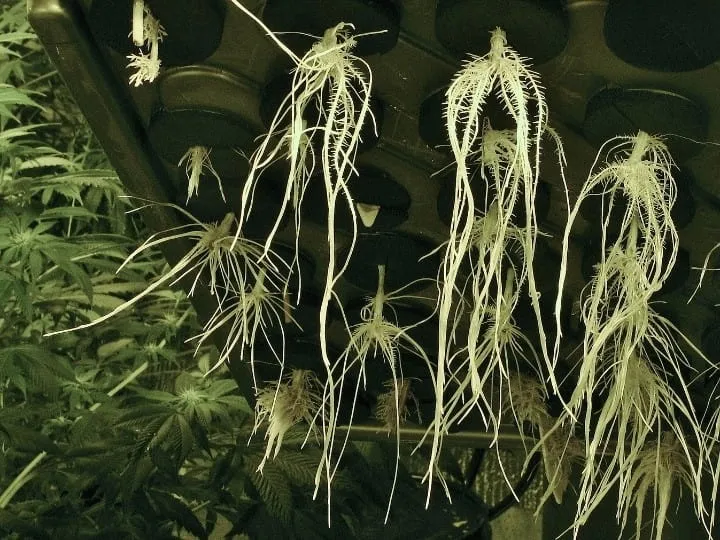
Benefits of DWC Hydroponics:
DWC hydroponics offers several advantages that contribute to its popularity among indoor gardeners:
- Excellent Oxygen Availability to the Roots: The submersion of plant roots in oxygenated water ensures a constant supply of oxygen. This abundant oxygen availability promotes vigorous root development, leading to healthier and faster plant growth.
- Easy Nutrient Management: DWC hydroponics simplifies nutrient management by directly exposing the plant roots to the nutrient solution. This direct contact allows for efficient nutrient uptake, minimizing the risk of nutrient deficiencies and ensuring optimal plant health.
- Suitable for a Wide Range of Plant Species: DWC hydroponics is versatile and suitable for various plant species, including leafy greens, herbs, and even fruiting plants. This flexibility makes it an attractive choice for indoor gardeners looking to cultivate a diverse range of plants.
Drawbacks and Considerations:
While DWC hydroponics offers numerous benefits, there are a few drawbacks and factors to consider when utilizing this system:
- Potential for Root Rot if Oxygenation is Inadequate: In DWC hydroponics, ensuring sufficient oxygenation is crucial. Inadequate oxygen levels can lead to the development of root rot, which can negatively impact plant health and growth. Proper aeration through the use of air pumps and stones is essential to prevent this issue.
- Requirement for Regular Water Quality Monitoring: Maintaining the quality of the nutrient solution is vital in DWC hydroponics. Regular monitoring of water pH and nutrient levels is necessary to prevent imbalances and ensure optimal plant nutrition. Monitoring tools such as pH meters and EC (Electrical Conductivity) meters are valuable in maintaining water quality.
Related: Is deep water culture the best? Learn more about its pros and cons.
Comparing NFT and DWC Hydroponics
When it comes to hydroponic systems, NFT and DWC are two widely used methods. While both systems offer efficient plant cultivation without the need for soil, they differ in their nutrient delivery methods, oxygen availability, water usage, plant suitability, and maintenance requirements. Let’s explore the key differences and similarities between NFT and DWC hydroponics:
Nutrient Delivery Method:
- NFT hydroponics involves the continuous flow of a thin film of nutrient solution over the plant roots. The roots are not fully submerged but rather receive nutrients through the flowing film.
- DWC hydroponics submerges the plant roots directly in a nutrient-rich solution. The roots are fully immersed in the water, allowing for direct nutrient uptake.
Oxygen Availability:
- In NFT hydroponics, the roots are exposed to the air flowing inside an enclosed channel. While this promotes oxygenation, it also limits the amount of oxygen available to the roots compared to DWC unless you add an air pump with air stones to the nutrient reservoir.
- DWC hydroponics provides abundant oxygen to the roots. The submerged roots have direct access to oxygen-rich water, facilitating healthy growth and nutrient absorption.
Water Usage:
- NFT hydroponics typically requires lower water usage due to the thin film system. The nutrient solution is recirculated and only a minimal amount is needed to maintain the film.
- DWC hydroponics generally utilizes more water as the roots are fully submerged in the nutrient solution. Regular water replenishment is necessary to maintain the desired water levels.
Plant Suitability:
- NFT hydroponics is particularly suitable for growing leafy greens and herbs. The continuous flow of nutrients provides an optimal environment for these types of plants for NFT.
- DWC hydroponics is versatile and can accommodate a wide range of plant types, including leafy greens, herbs, and fruiting plants. It offers flexibility in terms of the species that can be grown.
Maintenance and Problem-Solving Requirements:
Deep water culture is more forgiving for beginners, especially for growing crops on a smaller scale. However, both need you to keep a close eye on certain aspects.

- NFT hydroponics requires regular monitoring of the nutrient flow, solution chemistry, the thickness of the nutrient film, channel temperature, and sterilization. Ensuring the proper functioning of the flow system is essential for optimal plant growth. NFT systems can lead to clogged drains and hinder proper flow if plants develop large roots. Other failure points in NFT systems include power failures, disease spread, and temperature fluctuations. NFT systems require quick decision-making skills as delays in addressing problems can negatively impact crops.
- DWC hydroponics demands monitoring and adjustment of oxygen levels and water quality. Regular checks are necessary to maintain adequate oxygenation and prevent issues such as root rot. Failure points include power failures, disease spread, and temperature fluctuations. However, small-scale growers tend to achieve better results with this forgiving system rather than complex setups like NFT.
NFT vs DWC Yield:
- Large-scale commercial growers choose NFT due to its high yield, low cost, and reproducibility compared to media-based systems. NFT systems are more efficient in water and fertilizer usage, making them preferable for commercial growers.
- However, many problems in NFT setups can go unnoticed during a crop cycle, resulting in reduced yields without beginner growers realizing the cause. Therefore, DWC is the preferred choice for first-time hydroponic gardeners.
So Which is Better: NFT or DWC?
NFT systems are popular in large commercial operations but are rarely successful for small-scale growers and hobbyists. While NFT systems offer ideal conditions for plant growth, they are complex and prone to failure, making them challenging for small-scale growers who are often distracted by other aspects of their operations. Commercial growers have more resources and personnel dedicated to monitoring and addressing issues compared to small growers.
Commercial growers benefit from the high yield and cost-effectiveness of NFT, as well as its efficient use of water and fertilizer. However, small-scale growers often achieve better results with simpler and more forgiving hydroponic systems like DWC.

